|
 Secure Site
Secure Site
|
 |
Archive for the 'Meditation Tools' Category
 Once you experience the Zen Timepiece's progressive tones, you'll never want to meditate any other way. There’s nothing like economic calamity to focus the mind. But instead of obsessing over your job security or declining 401(k) balance, try diminishing your stress with a new assist from a very old tool: meditation.
Stretching back thousands of years to ancient spiritual traditions, meditation has been attracting a growing following of secular practitioners in recent years. While it’s still not exactly mainstream, data released in December by the National Center for Complementary and Alternative Medicine, an arm of the National Institutes of Health, show that 9.4 percent of adults surveyed in 2007 had tried meditation at least once during the previous 12 months, a significant increase from 7.6 percent in 2002. And 1 percent of children had zoned in, too.
Your choices are extensive—mindfulness meditation, transcendental meditation, and the latest trend, compassion meditation, are three of many approaches, each with a slightly different intent. Compassion meditation aims to foster a feeling of lovingkindness toward others, for example, while mindfulness meditation focuses on awareness and acceptance of the present moment.
Whatever the variation, certain basic elements are common to all forms of meditation. Comfortably seated, lying down, or even walking around, you focus your mind on your breath, a word, a mantra, an object—something specific—possibly for a few minutes but perhaps much longer, gently pushing away distracting thoughts. As you learn to stay focused, you experience a sense of calm. Your body relaxes. Your breathing slows. Your heart rate drops.
Many of those who practice meditation turn to it to help them deal with emotional stumbling blocks like stress and anxiety. It can also be used to change unhealthful eating habits or to battle substance abuse. And studies continue to add to the ways in which meditation might be able to play a therapeutic role—for example, it has been shown to bolster HIV patients’ immune systems, ease chronic pain, and reduce blood pressure.
Gene control. New research has been taking these discoveries to a deeper level, revealing how meditation and other relaxation techniques work in cells, turning on and off genes that are associated with inflammation, cell aging, and free radicals, all of which are associated with damage to cells and tissues. French philosopher René Descartes famously believed that the mind and body were separate entities, but emerging evidence is proving him wrong.
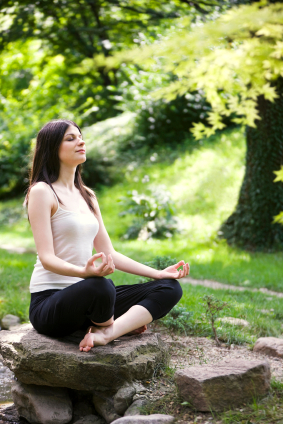 Once you experience the Zen Timepiece's progressive tones, you'll never want to meditate any other way. “What this shows is that you can actually change the brain with the mind,” says Herbert Benson, director emeritus of the Benson-Henry Institute for Mind Body Medicine at Massachusetts General Hospital. He is a coauthor of a study demonstrating such genetic changes that was published in July in the online journal PLoS One.
Meditation’s psychological and physical effects both are tied to the “fight or flight” response. When we are under stress, the brain sends hormones and other substances racing through our system to ready us for action. We become hyperalert, our heart rate and breathing speed up, our muscles tense, and our digestive processes shut down. While modern Americans are less likely to face physical danger than were our prehistoric, mastodon-hunting ancestors, there’s no shortage of other sources of stress. High-pressure, overbusy lives, coupled with the unrelenting economic uncertainty of much of the past year, can put the body in a constant state of hypervigilance. That’s not good. An ongoing state of revved-up alertness can damage tissues and organs, suppress the immune system, and cause anxiety and depression.
Mental workout. The calm that meditation engenders produces physical and emotional changes that represent the flip side of fight-or-flight. For those with overtaxed lives, a bonus of meditation is that a little of it apparently goes a long way. One study of individuals who were new to meditating showed measurable brain and behavior differences after just two weeks of daily 30-minute sessions, says Richard Davidson, director of the Waisman Laboratory for Brain Imaging and Behavior at the University of Wisconsin-Madison. But meditation is like any other workout: To reap the benefits, don’t stop. “This is mental exercise,” says Davidson. “If one wants [benefits] to continue, you have to continue.”
Experts and practice centers that can serve as sources ofmeditation training are becoming easier to find. One of the best known and most studied programs is the Mindfulness-Based StressReduction Program, which started at the University of Massachusetts Medical School nearly 30 years ago and is now offered by certified instructors at centers around the world. (You can see if there is one in your area atumassmed.edu/cfm/mbsr.) The program brings together a group of people once a week for eight weeks to learn sitting and walking meditation practices and gentle yoga stretches. For those who would rather learn on their own, books, tapes, and CDs are available from Jon Kabat-Zinn, founding executive director of the Center for Mindfulness in Medicine, Health Care, and Society at the University of Massachusetts and creator of the MBSR program, at mindfulnesstapes.com. They can help do-it-yourselfers learn the ropes.
 It serves as the perfect meditation timer. Available in 5 wood styles, including bamboo. No amount of meditating can magically erase the stress of losing a job or a loved one. But it can help people cope. “It can transform the emotional brain in ways that promote higher levels of resilience [and] less vulnerability and affect the body in ways that can improve health,” says Davidson. All that for just minutes a day? Even a shellshocked investor would have to admit: That sounds like a good deal.
By MICHELLE ANDREWS for US News
Use our unique “Zen Clock” which functions as a Yoga & Meditation Timer. It features a long-resonating acoustic chime that brings your meditation or yoga session to a gradual close, preserving the environment of stillness while also acting as an effective time signal. Our Yoga Timer & Clock can be programmed to chime at the end of the meditation or yoga session or periodically throughout the session as a kind of sonic yantra. The beauty and functionality of the Zen Clock/Timer makes it a meditation tool that can actually help you “make time” for meditation in your life. Bring yourself back to balance.
 It serves as the perfect meditation timer. Available in 5 wood styles, including bamboo. Now & Zen – The Acoustic Chime Meditation Timer Shop
1638 Pearl Street
Boulder, CO 80302
(800) 779-6383
orders@now-zen.com
Posted in Meditation Tools, mindfulness practice
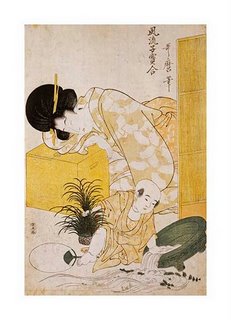 Once you experience the Zen Timepiece's progressive tones, you'll never want to meditate any other way. UTAMARO, Kitagawa, A Mother Dozing While Her Child Topples a Fish Bowl Pay close attention to each feeling, and let it be
Let’s say you slam into the back of a car that cuts you off or your boss moves your deadline up a week. How do you react? Perhaps your pulse quickens as you berate yourself for not foreseeing the circumstance. Maybe your breathing shortens as you feel anger or panic—or both. Most people, though, don’t notice such details; they react with an “Aargh!” and distract themselves with a run or a beer or a gallon of ice cream.
But researchers say one of the best ways of soothing stress is to be “mindful,” to pause and actually tune in to what’s going on at the moment. Being acutely aware of what you’re experiencing—the racing heart, the tumbling thoughts—and accepting it without judgment, observing as it changes, has a strong calming effect, experts say. “You might have a thought like ‘I’m a failure,’ but you know that it’s just a thought,” explains researcher Elissa Epel, an associate professor of psychiatry at the University of California-San Francisco School of Medicine. That will prevent you from turning those thoughts into a self-fulfilling prophecy by, say, quitting the gym or a challenging job.
Wandering thoughts. How do you get to a mindful state in the midst of a panic? Most people need to practice a form of meditation that focuses on their breathing and sensations in each body part. If your mind wanders (and it will), you just acknowledge the errant thoughts, let them go, and bring your attention back to the breath. Check out a mindfulness tape at mindfulnesstapes.com, or take a free virtual-mindfulness class on YouTube with Jon Kabat-Zinn, a professor of medicine emeritus at the University of Massachusetts and author of several books on mindfulness. “You are training your mind to be less reactive and more stable,” he writes in Full Catastrophe Living. A 2007 study found that mindfulness classes gave students an improved sense of well-being—and that practicing the technique for about 30 minutes a day helped induce a mindful response when people would normally feel stress.
 It's exquisite sounds summon your consciousness out of your meditative state with a series of subtle gongs. The practice may also help alleviate some of the physiological damage caused by chronic stress, like the tendency to store fat around abdominal organs. Epel and her colleagues are currently studying whether 50 overweight women who describe themselves as “stress eaters” can curb food cravings by practicing mindfulness—by noticing a raisin’s color, texture, and smell, say, before eating it. If stress reduction practices lower cortisol levels, the body’s storage of fat should shift from the abdomen to the hips and thighs, where it won’t cause insulin resistance, Epel speculates. A bonus: It might get easier to stop at one Oreo.
By DEBORAH KOTZ for US News
 It's exquisite sounds summon your consciousness out of your meditative state with a series of subtle gongs.
Posted in Meditation Timers, Meditation Tools
 It's exquisite sounds summon your consciousness out of your meditative state with a series of subtle gongs. ‘Om’ is where the heart is:
Meditation is gaining attention as a potential way to maintain well-being and good health. It can calm your mind, relax your body, and soothe your spirit. In addition, it’s inexpensive and its risks are minimal.
Meditation techniques aren’t new. They’ve been around for thousands of years. Anyone can meditate, regardless of religious or cultural background.
Consider these suggestions from the Mayo Clinic to get you started :
- Select a meditation technique that fits your lifestyle and belief system. Many people build meditation into their daily routine.
- Set aside some time. Start with 5-minute meditation sessions once or twice a day and work up to 20 minutes each time.
- Keep trying. Be kind to yourself as you get started. If you’re meditating and your attention wanders, slowly return to the object, sensation or movement you’re focusing on.
- Make meditation part of your life. Many people prefer to start and end their day with a period of meditation. Others prefer to take meditation breaks during the day. Experiment and find out what works best for you.
— Nancyann Rella
Meditation is generally an inwardly oriented, personal practice, which individuals do by themselves. Meditation may involve invoking or cultivating a feeling or internal state, such as compassion, or attending to a specific focal point. The term can refer to the state itself, as well as to practices or techniques employed to cultivate the state. There are dozens of specific styles of meditation practice; the word meditation may carry different meanings in different contexts. Meditation has been practiced since antiquity as a component of numerous religious traditions. A 2007 study by the U.S. government found that nearly 9.4% of U.S. adults (over 20 million) had practiced meditation within the past 12 months, up from 7.6% (more than 15 million people) in 2002.
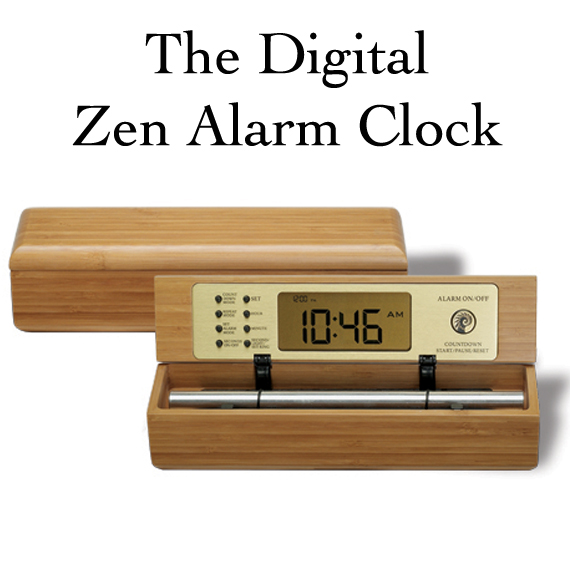 Once you experience the Zen Timepiece's progressive tones, you'll never want to meditate any other way. It serves as the perfect meditation timer.
Although meditation can be done in almost any context, practitioners usually employ a quiet, tranquil space, a meditation cushion or bench, and some kind of timing device to time the meditation session. Ideally, the more these accoutrements can be integrated the better. Thus, it is conducive to a satisfying meditation practice to have a timer or clock that is tranquil and beautiful. Using a kitchen timer or beeper watch is less than ideal. And it was with these considerations in mind that we designed our digital Zen Alarm Clock and practice timer. This unique “Zen Clock” features a long-resonating acoustic chime that brings the meditation session to a gradual close, preserving the environment of stillness while also acting as an effective time signal. The Digital Zen Clock can be programmed to chime at the end of the meditation session or periodically throughout the session as a kind of sonic yantra. The beauty and functionality of the Zen Clock/Timer makes it a meditation tool that can actually help you “make time” for meditation in your life.
 Once you experience the Zen Timepiece's progressive tones, you'll never want to meditate any other way. It serves as the perfect meditation timer. Now & Zen – The Meditation Time Shop
1638 Pearl Street
Boulder, CO 80302
(800) 779-6383
orders@now-zen.com
Posted in Meditation Timers, Meditation Tools
N  It's exquisite sounds summon your consciousness out of your meditative state with a series of subtle gongs. Once you experience the Zen Timepiece's progressive tones, you'll never want to meditate any other way. It serves as the perfect meditation timer. Brain imaging shows experienced meditators can prevent their minds from wandering
(HealthDay News) — A new study finds that people skilled at meditation seem able to turn off areas of the brain associated with daydreaming and psychiatric disorders such as autism and schizophrenia.
Learning more about how meditation works could help advance research into a number of diseases, according to lead author Dr. Judson Brewer, an assistant professor of psychiatry at Yale University.
He and his colleagues used functional MRI to assess brain activity in experienced and novice meditators as they performed three different meditation techniques.
Regardless of the type of meditation, skilled meditators had decreased activity in the brain’s default mode network, which has been linked to attention lapses and disorders such as anxiety, attention deficit hyperactivity disorder, and the buildup of beta amyloid plaques associated with Alzheimer’s disease.
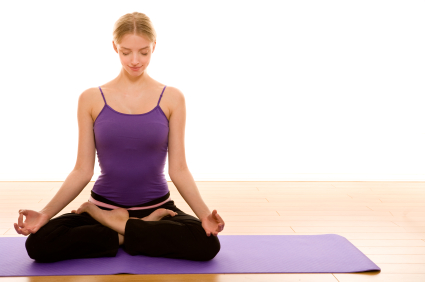 It serves as the perfect meditation timer. The researchers also found that when the default mode network (which consists of the medial prefrontal and posterior cingulate cortex) was active, brain regions associated with self-monitoring and cognitive control were also activated in experienced meditators, but not novices.
This suggests that skilled meditators constantly monitor and suppress the emergence of “me” thoughts and mind wandering. If they become too strong, these two states of mind are associated with diseases such as autism and schizophrenia.
The experienced meditators were able to co-activate the two brain regions both during meditation and while resting, which suggests they have developed a “new” default mode that’s more present-centered and less self-centered, the researchers said.
“Meditation’s ability to help people stay in the moment has been part of philosophical and contemplative practices for thousands of years,” Brewer said in a Yale news release. “Conversely, the hallmark of many forms of mental illness is a preoccupation with one’s own thoughts, a condition meditation seems to affect. This gives us some nice cues as to the neural mechanisms of how it might be working clinically.”
The study appears Nov. 21 in the Proceedings of the National Academy of Sciences.
More information
The U.S. National Center for Complementary and Alternative Medicine has more about meditation.
— Robert Preidt
SOURCE: Yale University, news release, Nov. 18, 2011
Use our unique “Zen Clock” which functions as a Yoga & Meditation Timer. It features a long-resonating acoustic chime that brings your meditation or yoga session to a gradual close, preserving the environment of stillness while also acting as an effective time signal. Our Yoga Timer & Clock can be programmed to chime at the end of the meditation or yoga session or periodically throughout the session as a kind of sonic yantra. The beauty and functionality of the Zen Clock/Timer makes it a meditation tool that can actually help you “make time” for meditation in your life. Bring yourself back to balance.
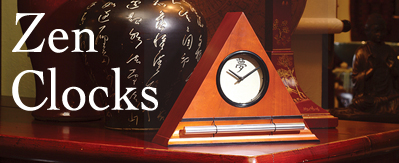 It's exquisite sounds summon your consciousness out of your meditative state with a series of subtle gongs. Once you experience the Zen Timepiece's progressive tones, you'll never want to meditate any other way. Now & Zen – The Meditation Timer Shop
1638 Pearl Street
Boulder, CO 80302
(800) 779-6383
orders@now-zen.com
Posted in Meditation Timers, Meditation Tools
 It's exquisite sounds summon your consciousness out of your meditative state with a series of subtle gongs. Once you experience the Zen Timepiece's progressive tones, you'll never want to meditate any other way. It serves as the perfect meditation timer. Set aside 30 minutes, preferably at the end of the day, to try this Naikan practice.
Sitting comfortably, with eyes closed, take a few moments to bring attention to your breath, mantra, or any other technique that you normally use to center yourself. When you feel settled, ask yourself this series of questions:
What have I received today?
Be specific and reflect on as many things as you can recall. It can be something as simple as your partner’s smile, the sound of a bird singing at dawn, the driver who let you merge into the crowded freeway. Remember, the motivation or attitude of those who gave you something is not the issue. Maybe you were offered lunch because you showed up at lunchtime, not because your friend made a personal effort to make you lunch. The fact is, you were fed, and you can feel gratitude for that. The mere fact that you benefited from someone’s actions is all that is needed to cultivate gratitude.
Notice which of these things you did not appreciate as they happened. Can you recall what was taking your attention when one of these acts of grace occurred? Were you stuck in problem-solving mode, thinking of your to-do list, or making judgments?
We often live as if the world owes us. As you reflect on what you have been given today, you will likely see that, if anything, you owe the world an insurmountable debt. This insight is more than merely humbling; you may find yourself feeling a deeper sense of gratitude and a natural desire to be generous in serving others.
What have I given today?
 This unique "Zen Clock" features a long-resonating acoustic chime that brings the meditation session to a gradual close, preserving the environment of stillness while also acting as an effective time signal. Go through the day’s events in the same way, but this time notice what you have given to others. Be as specific and concrete as possible. As above, your motivation is irrelevant. What did you actually do? It may have been as simple as feeding your cats, washing the breakfast dishes, or sending a friend a birthday card. You may find that without great fanfare you contribute to the well-being of many people and animals—you make a positive difference to the planet.
What difficulties and troubles did I cause today?
Again, be specific. Don’t overlook the seemingly insignificant. Your list may include things like “I backed up traffic while looking for a place to park” or “I chased the cats off the lounge chair so I could sit there.” This question is often the hardest, but its importance cannot be overstated. It may bring up feelings of remorse, but its primary purpose is to provide a more realistic view of your life.
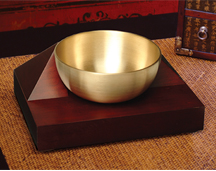 Now & Zen’s mission is to participate in the emerging movement in society toward a more spiritually focused lifestyle. In general, we are all too aware of how others cause us inconvenience or difficulty, but rarely do we notice when we are the source of inconvenience. And if we do, we usually brush it aside as an accident, not that big a deal, or simply something we didn’t mean to do. We cut ourselves a huge length of slack! But seeing how you cause others difficulty can deflate your ego while reminding you again of the grace by which you live.
These questions provide the framework for reflecting on all your relationships, including those with family, friends, co-workers, partners, pets, and even objects. You can reflect on the events of one day, a specific person over the course of your relationship, or a holiday visit with family.
Remember, what makes this a meditative practice is that you are not analyzing your motivations or intentions; you are not interpreting or judging. You are simply shifting your attention from self-centered thinking to seeing things as they are, and as all yoga traditions point out, in seeing, there is wisdom and liberation.
adapted from Yogajournal.com by By Frank Jude Boccio
Although meditation can be done in almost any context, practitioners usually employ a quiet, tranquil space, a meditation cushion or bench, and some kind of timing device to time the meditation session. Ideally, the more these accoutrements can be integrated the better. Thus, it is conducive to a satisfying meditation practice to have a timer or clock that is tranquil and beautiful. Using a kitchen timer or beeper watch is less than ideal. And it was with these considerations in mind that we designed our digital Zen Alarm Clock and practice timer. This unique “Zen Clock” features a long-resonating acoustic chime that brings the meditation session to a gradual close, preserving the environment of stillness while also acting as an effective time signal. The Digital Zen Clock can be programmed to chime at the end of the meditation session or periodically throughout the session as a kind of sonic yantra. The beauty and functionality of the Zen Clock/Timer makes it a meditation tool that can actually help you “make time” for meditation in your life.
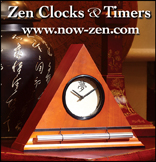 Now & Zen’s mission is to participate in the emerging movement in society toward a more spiritually focused lifestyle.
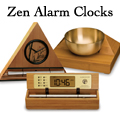 Rather than an artificial recorded sound played through a speaker, the Zen Clock features an alloy chime bar similar to a wind chime. Now & Zen – The Meditation Timer Shop
1638 Pearl Street
Boulder, CO 80302
(800) 779-6383
Orders@now-zen.com
Posted in intention, Meditation Timers, Meditation Tools, mindfulness practice
 It's exquisite sounds summon your consciousness out of your meditative state with a series of subtle gongs. Once you experience the Zen Timepiece's progressive tones, you'll never want to meditate any other way. It serves as the perfect meditation timer. Think meditating requires the patience, dedication, and endless free time of a Tibetan monk? Here are three simple ways to work this mind-calming, heart-strengthening discipline into your daily routine, no matter how confirmed a type A you are.
Walking Meditation Focus on your breathing; count your steps. Become aware of how your feet and legs move. Celebrate each movement as a miracle of silent communication between your brain and your body.
Mindfulness Concentrate all your energy on whatever you’re doing now, even something as mundane as washing dishes. Consider each element of the activity as if you were moving in slow motion. If other thoughts interrupt, gently bring your mind back to your task.
Mantra In Sanskrit, man means mind and tra means deliverance. Repeating a mantra–a word, phrase, or sound–creates a sound vibration that could deliver you from worldly cares. Choose a prayer, word, or sound that invokes a spiritual feeling. Sit comfortably and breathe deeply as you chant it silently.
adapted from Prevention by By Sara Altshul
Although meditation can be done in almost any context, practitioners usually employ a quiet, tranquil space, a meditation cushion or bench, and some kind of timing device to time the meditation session. Ideally, the more these accoutrements can be integrated the better. Thus, it is conducive to a satisfying meditation practice to have a timer or clock that is tranquil and beautiful. Using a kitchen timer or beeper watch is less than ideal.
And it was with these considerations in mind that we designed our digital Zen Alarm Clock and practice timer. This unique “Zen Clock” features a long-resonating acoustic chime that brings the meditation session to a gradual close, preserving the environment of stillness while also acting as an effective time signal. The Digital Zen Clock can be programmed to chime at the end of the meditation session or periodically throughout the session as a kind of sonic yantra. The beauty and functionality of the Zen Clock/Timer makes it a meditation tool that can actually help you “make time” for meditation in your life.
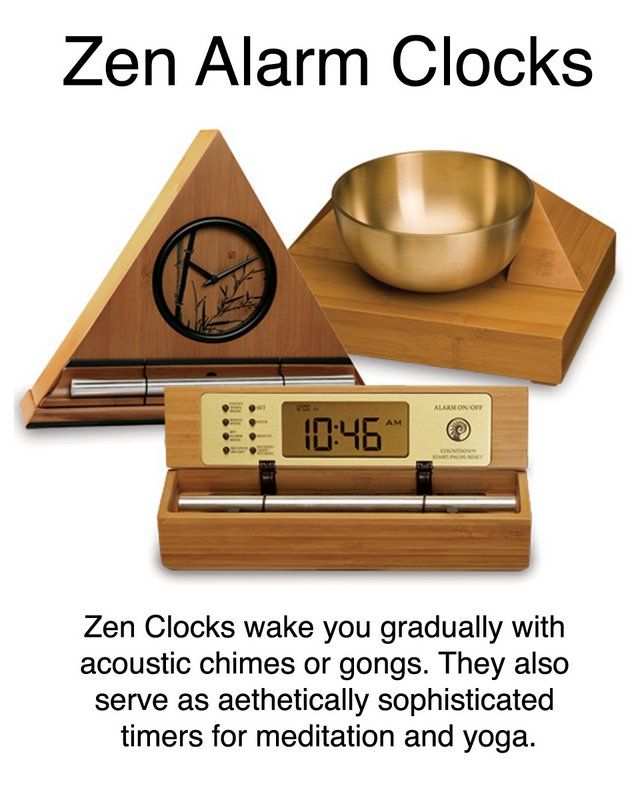 This unique "Zen Clock" features a long-resonating acoustic chime that brings the meditation session to a gradual close, preserving the environment of stillness while also acting as an effective time signal.
Posted in Bamboo Chime Clocks, Meditation Timers, Meditation Tools, mindfulness practice
 It's exquisite sounds summon your consciousness out of your meditative state with a series of subtle gongs. Once you experience the Zen Timepiece's progressive tones, you'll never want to meditate any other way. It serves as the perfect meditation timer. Available in 5 wood styles, including bamboo. Meditation as medication.
A federally funded study on hypertension conducted in West Oakland yielded positive results for the practitioners of transcendental meditation, a technique used to relax the body and the mind — and much, much more, say hardcore adherents.
Findings of the study were published Friday in the American Journal of Hypertension, a publication of the American Society of Hypertension Inc. The study was the work of a medical team led by Dr. Frank Staggers, a longtime Oakland physician who now works as a senior detox physician at the Haight Ashbury Free Clinic in San Francisco. Research for the project was conducted over a period of 10 years, starting in 1994.
The study comprised 150 people, whose average age was 49, who were divided into three separate groups and used separate techniques to try to reduce stress levels and lower blood pressure. One group practiced meditation, another used progressive muscle relaxation, and the third used conventional health and education techniques to lower blood pressure.
“I was working at the West Oakland Health Center in the 1980s when I made my first observations during the course of my patient examinations,” Staggers said. “I told my patients with hypertension to close their eyes, relax and take deep breaths.”
When Staggers began to notice a difference in the stress levels of his patients, he started digging a little deeper into relaxation techniques.
He contacted Dr. Robert Schneider, a colleague from Maharishi International University in Fairfield, Iowa, and the two put together a research team and sent a funding proposal to the National Institutes of Health. The NIH responded with a grant from its national Center for Complementary and Alternative Medicine.
Blood pressure, which is disproportionately high among African Americans, was monitored for a year in all three testing categories, Staggers said.
Transcendental meditation was chosen over other practices, such as Zen and religious meditation, because there were varying techniques and not nearly as much research data as had been collected on TM over the years.
 It features a long-resonating acoustic chime that brings your meditation or yoga session to a gradual close, preserving the environment of stillness while also acting as an effective time signal. “These techniques had a long track record and had been studied at some of the largest research universities in the nation, but they had never been studied with respect to treating disease,” Staggers said.
“As a practicing physician, I didn’t want to take a technique that no one has ever used, because you don’t know what will happen. TM has been studied since the 1960s.”
Of the three groups that participated in the study, meditation practitioners witnessed the reduction of 6 millimeters in diastolic pressure and a 3-millimeter drop in systolic blood-pressure readings.
There was also a 23 percent reduction in that group in the use of antihypertensive medications used to treat the disease.
Staggers said meditation has shown promise in helping reduce the symptoms of numerous physical and mental ailments, including asthma, depression, anxiety, cancer, diabetes and arthritis. He also said the technique can be an effective tool in the fight against drug dependency and addiction.
Joyce Muse-Harris, a nurse practitioner and Oakland resident who suffers from hypertension, took part it the study and heaps praise on how meditating for 20 minutes twice a day affects her health and outlook.
“I wanted to be in the meditation program because I’ve always believed in alternative medical techniques and haven’t always agreed with the techniques used in Western medicine,” she said.
The meditation sessions helped her reduce stress and “get a handle on some of the things that were happening in my life,” she said.
Muse-Harris used the techniques to deal with a colleague with whom she had a conflict. “After doing the meditation for a while, that person didn’t bother me anymore, because I decided I would not add to their stress,” she said.
Muse-Harris has gotten better at the technique and says she can now meditate just about anywhere — riding in a car or even on a BART train.
“At first it was difficult to do, but if you sit quietly, and let your mind relax, it will start running through all the errands you have to do, a shopping list, but if you don’t fight, those things fade away and your mind becomes clear,” she said.
Muse-Harris still takes hypertension medication but says the meditation provides her with an inner calm that keeps a lid on stressful reaction to challenging situations.
I must admit to a little skepticism about some the claims made by TMers over the years, particularly their description of mental-flying when a person achieves the highest state of the art.
The “yogic fliers” who sit in the lotus position and begin to hop around on foam cushions once they’ve reached a higher mental state always looked pretty suspicious to me, but this is a bit different.
If calming the mind in order to heal the body can be achieved through meditation instead of medication, I say go for it.
adapted from Sfgate.com by Chip Johnson
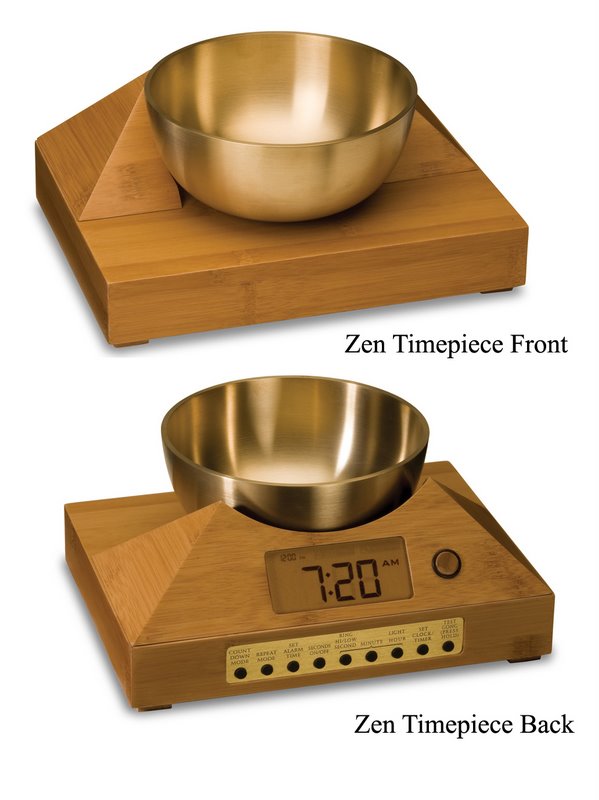 It features a long-resonating acoustic chime that brings your meditation or yoga session to a gradual close, preserving the environment of stillness while also acting as an effective time signal. Now & Zen – The Singing Bowl Meditation Timer Store
1638 Pearl Street
Boulder, CO 80302
(800) 779-6383
orders@now-zen.com
Posted in Bamboo Chime Clocks, Meditation Timers, Meditation Tools, mindfulness practice
 The Zen Alarm Clock transforms mornings, awakening you gradually with a series of gentle acoustic chimes Once you use a Zen Clock nothing else will do - KOITSU -- Full Moon at Akashi Beach If you’re tossing and turning and having trouble getting a good night’s sleep, you may want to consider meditation, researchers suggest.
People with primary insomnia reported that they slept better after trying meditation, according to a new study to be presented June 9 at SLEEP, the annual meeting of the Associated Professional Sleep Societies, in Seattle.
Primary insomnia is described as difficulty getting to sleep or staying asleep over a time period of at least one month, according to the U.S. National Institutes of Health.
While most insomnia occurs along with another physical or mental illness or disorder, or as a side effect of medications or other substances, primary insomnia occurs on its own.
In the study, researchers divided 11 participants aged 25 to 45 with chronic primary insomnia into two groups. One group participated in Kriya Yoga — a form of meditation that helps an individual focus internalized attention and can reduce arousal — as well as health education.
The other group received information about improving health through exercise, nutrition, weight loss and stress management but did not participate in meditation.
After two months, the meditation group reported improvements in sleep quality, how long it took to get to sleep, total sleep time, total wake time, sleep efficiency and depression, the researchers reported.
Primary insomnia is believed to be a problem of hyperarousal, with high levels of arousal noted 24 hours a day, said lead study author Dr. Ramadevi Gourineni, director of the insomnia program at Northwestern Memorial Hospital in Evanston, Ill.
“Results of the study show that teaching deep relaxation techniques during the daytime can help improve sleep at night,” Gourineni said in a news release from the American Academy of Sleep Medicine.
 Wake up refreshed, love your alarm clock, transform your mornings with The Zen Alarm Clock's progressive awakening with gentle chimes. About 9.4 percent of U.S. residents, or an estimated 20 million people, try meditating during a 12-month period, according to a 2007 study by the National Center for Complementary and Alternative Medicine. People reported using meditation for various health problems, including anxiety, pain, depression, stress and insomnia.
A 2007 review of the scientific literature found some evidence that meditation is associated with health benefits, possibly by causing heart rate and breathing to slow, improving blood flow and reducing activity in the sympathetic nervous system (the body’s fight-or-flight mechanism).
Boulder, Colorado—an innovative company has taken one of life’s most unpleasant experiences (being startled awake by your alarm clock early Monday morning), and transformed it into something to actually look forward to. “The Zen Alarm Clock,” uses soothing acoustic chimes that awaken users gently and gradually, making waking up a real pleasure. Rather than an artificial recorded sound played through a speaker, the Zen Clock features an alloy chime bar similar to a wind chime. When the clock’s alarm is triggered, its chime produces a long-resonating, beautiful acoustic tone reminiscent of a temple gong. Then, as the ring tone gradually fades away, the clock remains silent until it automatically strikes again three minutes later. The frequency of the chime strikes gradually increase over ten-minutes, eventually striking every five seconds, so they are guaranteed to wake up even the heaviest sleeper. This gentle, ten-minute “progressive awakening” leaves users feeling less groggy, and even helps with dream recall.
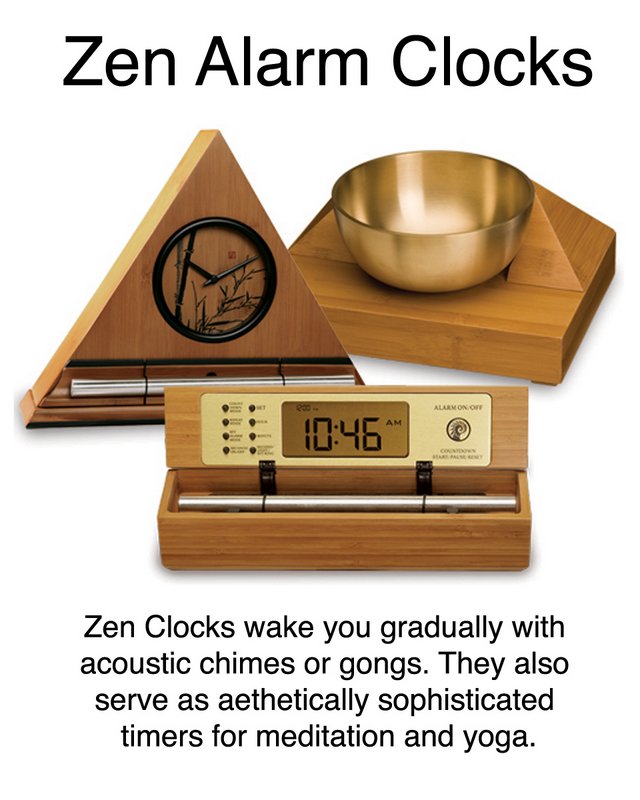 Wake up refreshed, love your alarm clock, transform your mornings with The Zen Alarm Clock's progressive awakening with gentle chimes. More information
The National Center for Complementary and Alternative Medicine has more on meditation and health.
Posted in Bamboo Chime Clocks, Meditation Timers, Meditation Tools, mindfulness practice
 Utamaro Portrait of the Courtesan Shirotama of the Tamaya 1790 Now & Zen has created a unique wellness gifts that will delight that someone special. The Zen Alarm Clock® and The Digital Zen Alarm Clock® are lifestyle timepieces that really impact people’s lives — they provide a gentle and gradual awakening with Tibetan bell-like acoustic chimes. But more than alarm clocks, these products also serve as aesthetically beautiful timers for practices such as yoga, bodywork, and meditation.
Zen Alarm Clocks are an aesthetic accouterment to almost any wellness practice. We have been featured in many mainstream media outlets including Good Morning America, GQ Magazine, The New York Times, American Spa, and The L.A. Times. These beautiful personal timers are a perfect wellness gift.
We have sold over 100,000 of our original triangular-shaped Zen Clocks (and sales continue to grow every year largely through word-of-mouth), and our Digital Zen Alarm Clocks (winner of the Denver Business Journal’s Most Innovative New Consumer Product Award) are continuing to be the favorite in independent retail channels nationwide.
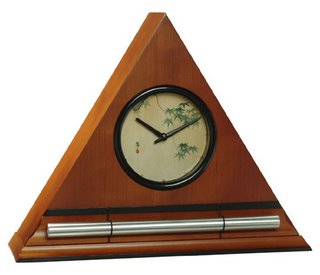 Japanese Leaves Zen Alarm Clock by Now & Zen, Inc. Now & Zen’s Wellness Alarm Clocks and Timers Store
1638 Pearl Street
Boulder, CO 80302
Posted in Japanese Inspired Zen Clocks, Meditation Timers, Meditation Tools, Natural Awakening, Now & Zen Alarm Clocks, Progressive Awakening
 The beauty and functionality of the Zen Clock/Timer makes it a meditation tool that can actually help you "make time" for meditation in your life. “Attentional-blink” occurs when two pieces of information are presented to a person in very close succession, and the brain doesn’t perceive the second piece of information because it is still processing the first. Richard Davidson and colleagues attempted to determine if intensive mental training through meditation could extend the brain’s limits on information processing, reducing “attentional-blink.”
The researchers compared two groups of people—17 expert meditators and 23 novices—to see if either was better at recognizing two pieces of information shown in quick succession.
The participants were tested at the beginning and end of a 3-month period. For the intervening 3 months, the meditation practitioners participated in a retreat, during which they meditated for 10-12 hours a day. The novices participated in a 1-hour meditation class, and were asked to meditate for 20 minutes a day for the week before each test.
The researchers found that intensive training did reduce “attentional-blink.” The participants who had gone through the mental training were more likely to perceive both pieces of information instead of just the first because the brain used fewer resources to detect the first piece of information—leaving more resources available to detect the second. The researchers also note that this study supports the idea that brain plasticity, or the ability of the brain to adapt, exists throughout life.
Use our unique “Zen Clock” which functions as a Yoga & Meditation Timer. It features a long-resonating acoustic chime that brings your meditation or yoga session to a gradual close, preserving the environment of stillness while also acting as an effective time signal. Our Yoga Timer & Clock can be programmed to chime at the end of the meditation or yoga session or periodically throughout the session as a kind of sonic yantra. The beauty and functionality of the Zen Clock/Timer makes it a meditation tool that can actually help you “make time” for meditation in your life. Bring yourself back to balance.
 The beauty and functionality of the Zen Clock/Timer makes it a meditation tool that can actually help you "make time" for meditation in your life. Bring yourself back to balance. adapted from National Center for Complementary and Alternative Medicine
 - “Mindfulness” is the spiritual practice of being aware of your present moment.
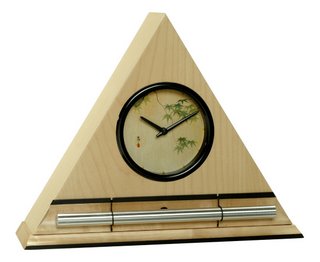 It features a long-resonating acoustic chime that brings your meditation or yoga session to a gradual close, preserving the environment of stillness while also acting as an effective time signal. Now & Zen
1638 Pearl Street
Boulder, CO 80302
(800) 779-6383
orders@now-zen.com
Posted in Bamboo Chime Clocks, Meditation Timers, Meditation Tools, mindfulness practice
« Previous Page — « Previous Entries
Next Entries » — Next Page »
|
|
|
|